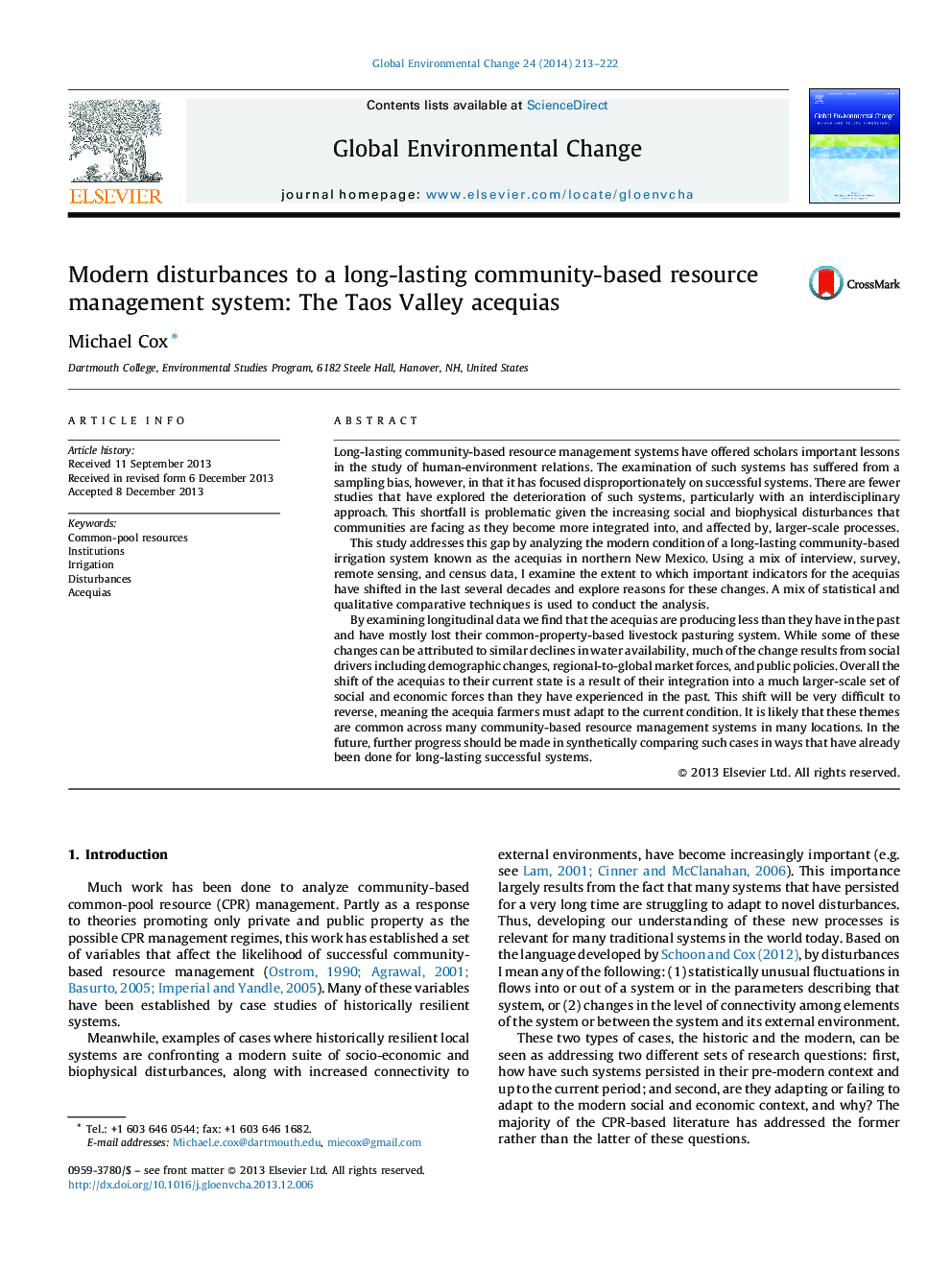| Article ID | Journal | Published Year | Pages | File Type |
|---|---|---|---|---|
| 7470683 | Global Environmental Change | 2014 | 10 Pages |
Abstract
By examining longitudinal data we find that the acequias are producing less than they have in the past and have mostly lost their common-property-based livestock pasturing system. While some of these changes can be attributed to similar declines in water availability, much of the change results from social drivers including demographic changes, regional-to-global market forces, and public policies. Overall the shift of the acequias to their current state is a result of their integration into a much larger-scale set of social and economic forces than they have experienced in the past. This shift will be very difficult to reverse, meaning the acequia farmers must adapt to the current condition. It is likely that these themes are common across many community-based resource management systems in many locations. In the future, further progress should be made in synthetically comparing such cases in ways that have already been done for long-lasting successful systems.
Related Topics
Life Sciences
Environmental Science
Environmental Science (General)
Authors
Michael Cox,
